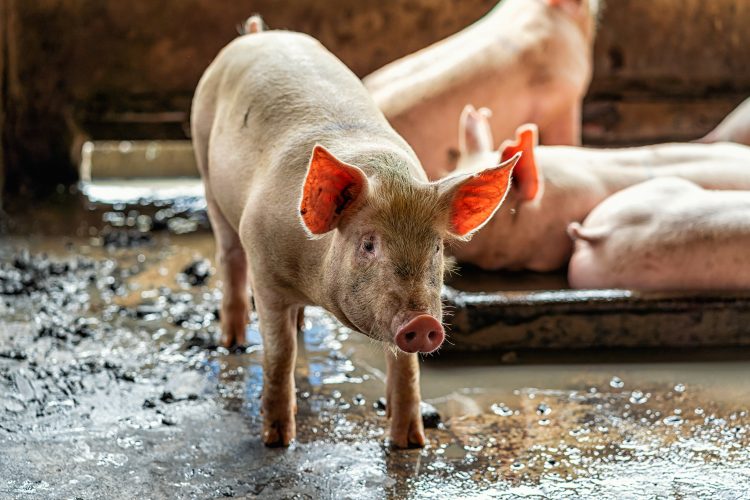Maximizing Pig Growth: Exploring Growth Promoters vs. Natural Methods
Maximizing Pig Growth: Exploring Growth Promoters vs. Natural Methods

In the dynamic world of pig farming, maximizing growth is essential for ensuring profitability and sustainability. Achieving optimal growth rates not only enhances productivity but also contributes to efficient resource utilization and overall herd health. In pursuit of accelerated growth, pig farmers often consider two primary approaches: the use of growth promoters and natural methods. In this comprehensive exploration, we will delve into the advantages, disadvantages, and considerations associated with each approach to help pig farmers make informed decisions about maximizing pig growth in their operations.
Understanding Pig Growth
Before diving into the discussion of growth promoters and natural methods, it’s essential to understand the factors influencing pig growth. Pig growth is influenced by various factors, including genetics, nutrition, management practices, environmental conditions, and health status. Genetic selection plays a significant role in determining growth potential, with breeding programs focusing on traits such as growth rate, feed efficiency, and carcass quality. Nutrition is another critical factor, as pigs require a balanced diet with adequate levels of protein, energy, vitamins, and minerals to support growth and development. Effective management practices, such as housing, ventilation, and disease control, also play a crucial role in maximizing pig growth and performance.
Growth Promoters: Pros and Cons
Growth promoters are substances or additives used in pig feed to enhance growth performance and efficiency. These additives typically include antibiotics, hormones, probiotics, prebiotics, enzymes, and growth factors designed to promote nutrient utilization, improve feed conversion efficiency, and stimulate growth in pigs. While growth promoters have been widely used in pig farming for decades, their use has become increasingly controversial due to concerns about antimicrobial resistance, environmental impact, and consumer preferences.
Pros:
- Improved Growth Performance: Growth promoters can enhance growth rates and feed efficiency in pigs, leading to faster weight gain and reduced time to market.
- Enhanced Feed Conversion: Growth promoters can improve nutrient utilization and feed conversion efficiency, allowing pigs to convert feed into muscle more efficiently and reduce feed costs.
- Disease Prevention: Some growth promoters, such as antibiotics and probiotics, have been shown to reduce the incidence of diseases and improve overall health in pigs by promoting gut health and immune function.
- Reduced Environmental Impact: By improving feed efficiency and reducing the time required for pigs to reach market weight, growth promoters can help reduce the environmental footprint of pig farming, including resource use and greenhouse gas emissions.
Cons:
- Antimicrobial Resistance: The use of antibiotics as growth promoters has been linked to the development of antimicrobial resistance, posing a risk to human and animal health by reducing the effectiveness of antibiotics for treating infections.
- Environmental Concerns: The use of growth promoters, especially antibiotics, can contribute to environmental pollution through the excretion of antibiotic residues in manure and the development of antibiotic-resistant bacteria in the environment.
- Consumer Preferences: Consumer demand for antibiotic-free and hormone-free pork products has led to increased scrutiny and regulations on the use of growth promoters in pig farming, with some consumers preferring products produced using natural methods.
- Regulatory Restrictions: Regulatory agencies in many countries have implemented restrictions and bans on the use of certain growth promoters, such as antibiotics and hormones, in livestock production due to concerns about antimicrobial resistance and food safety.
Natural Methods: Pros and Cons
In contrast to growth promoters, natural methods focus on maximizing pig growth using non-chemical, non-synthetic approaches that emphasize natural nutrition, management practices, and environmental conditions. Natural methods aim to optimize pig growth through balanced diets, stress reduction, herd health management, and environmental enrichment, without relying on artificial additives or interventions.
Pros:
- Consumer Demand: There is growing consumer demand for natural, organic, and antibiotic-free pork products, driving interest and investment in natural methods of pig production.
- Environmental Sustainability: Natural methods prioritize environmental sustainability by minimizing the use of synthetic inputs, reducing resource consumption, and promoting ecological balance in pig farming systems.
- Animal Welfare: Natural methods focus on promoting animal welfare by providing pigs with access to outdoor environments, social interaction, and natural behaviors, enhancing their overall well-being and quality of life.
- Regulatory Compliance: Natural methods align with regulatory requirements and consumer expectations for sustainable, ethical, and environmentally responsible pig production practices, reducing the risk of regulatory non-compliance and market rejection.
Cons:
- Slower Growth Rates: Compared to growth promoters, natural methods may result in slower growth rates and longer time to market, potentially reducing profitability and efficiency in pig farming operations.
- Higher Feed Costs: Natural diets and feed additives used in natural methods may be more expensive than conventional feed ingredients and growth promoters, increasing production costs and reducing profit margins for pig farmers.
- Limited Effectiveness: Natural methods may be less effective than growth promoters in maximizing pig growth and feed efficiency, particularly in intensive production systems where rapid growth and high productivity are prioritized.
- Management Challenges: Implementing natural methods requires careful management, attention to detail, and investment in infrastructure and resources to provide pigs with optimal nutrition, health care, and environmental conditions.
Finding the Right Balance
In the debate between growth promoters and natural methods, the key lies in finding the right balance between maximizing growth performance and meeting consumer preferences, regulatory requirements, and sustainability goals. While growth promoters can offer short-term benefits in terms of growth rate and feed efficiency, they also pose risks to human health, animal welfare, and the environment. Natural methods, on the other hand, prioritize long-term sustainability, animal welfare, and consumer demand but may entail trade-offs in terms of growth performance and production efficiency.
Pig farmers must carefully evaluate the advantages, disadvantages, and implications of each approach and consider factors such as market demand, regulatory compliance, environmental impact, and farm-specific circumstances when making decisions about maximizing pig growth in their operations. By adopting a holistic approach that integrates best practices from both growth promoters and natural methods, pig farmers can optimize growth performance, enhance sustainability, and meet the evolving needs and expectations of consumers and society. Ultimately, the goal is to achieve balanced growth that maximizes profitability while ensuring the health, welfare, and sustainability of pig farming systems for future generations.
Previous Article
Market Trends: Understanding What Buyers Look for in Quality PorkPig Farming
November 26, 2024





























































